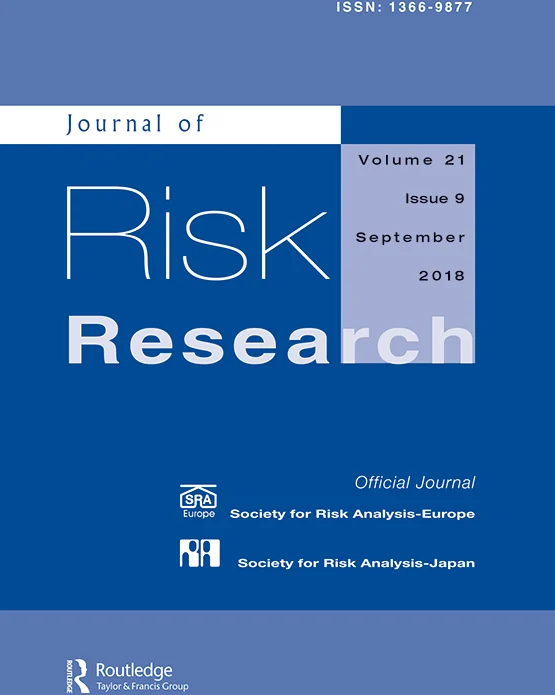利益相关者安全沟通:患者和家属关于医院安全风险的报告
IF 2.4
4区 管理学
Q1 SOCIAL SCIENCES, INTERDISCIPLINARY
引用次数: 1
摘要
安全沟通是指在组织内部共享安全信息,以减轻危害和改进风险管理。虽然风险研究人员主要调查员工的安全沟通行为(如语音),但越来越多的工作(如医疗保健、交通运输)表明,公共利益相关者也向组织传达安全信息。为了调查利益相关者安全沟通行为的性质及其对组织风险管理的可能贡献,在政府公开调查中记录了患者和家属关于试图报告不安全医院安全风险的陈述。在调查中,410名患者和家属参与安全沟通行为(表达担忧、撰写投诉和举报)的叙述被识别和分析。通常,安全沟通的目的是确保医院工作人员解决对患者和家属有明显影响的安全风险(如用药错误、临床忽视),但临床医生和管理人员未注意或未加以纠正。然而,患者和家属安全沟通在降低风险方面的成功是不确定的,医院安全文化中的问题(例如工作量大、淡化安全问题)意味着患者和家属提供的信息往往没有得到采取行动。由于公共利益相关者作为独立服务使用者的独特角色,他们可以通过沟通员工和管理人员遗漏或未解决的安全风险,从而潜在地支持组织的风险管理。然而,要做到这一点,组织内部必须有能力和开放性来回应利益相关者的安全沟通。本文章由计算机程序翻译,如有差异,请以英文原文为准。
Stakeholder safety communication: patient and family reports on safety risks in hospitals
Abstract Safety communication relates to the sharing of safety information within organizations in order to mitigate hazards and improve risk management. Although risk researchers have predominantly investigated employee safety communication behaviors (e.g. voice), a growing body of work (e.g. in healthcare, transport) indicates that public stakeholders also communicate safety information to organizations. To investigate the nature of stakeholder safety communication behaviors, and their possible contribution to organizational risk management, accounts from patients and families – recorded in a government public inquiry – about trying to report safety risks in an unsafe hospital were examined. Within the inquiry, 410 narrative accounts of patients and families engaging in safety communication behaviors (voicing concerns, writing complaints, and whistleblowing) were identified and analyzed. Typically, the aim of safety communication was to ensure hospital staff addressed safety risks that were apparent and impactful to patients and families (e.g. medication errors, clinical neglect), yet unnoticed or uncorrected by clinicians and administrators. However, the success of patient and family safety communication in ameliorating risk was variable, and problems in hospital safety culture (e.g. high workloads, downplaying safety problems) meant that information provided by patients and families was frequently not acted upon. Due to their distinct role as independent service-users, public stakeholders can potentially support organizational risk management through communicating on safety risks missed or not addressed by employees and managers. However, for this to happen, there must be capacity and openness within organizations for responding to safety communication from stakeholders.
求助全文
通过发布文献求助,成功后即可免费获取论文全文。
去求助
来源期刊

Journal of Risk Research
SOCIAL SCIENCES, INTERDISCIPLINARY-
CiteScore
12.20
自引率
5.90%
发文量
44
期刊介绍:
The Journal of Risk Research is an international journal that publishes peer-reviewed theoretical and empirical research articles within the risk field from the areas of social, physical and health sciences and engineering, as well as articles related to decision making, regulation and policy issues in all disciplines. Articles will be published in English. The main aims of the Journal of Risk Research are to stimulate intellectual debate, to promote better risk management practices and to contribute to the development of risk management methodologies. Journal of Risk Research is the official journal of the Society for Risk Analysis Europe and the Society for Risk Analysis Japan.
 求助内容:
求助内容: 应助结果提醒方式:
应助结果提醒方式:


